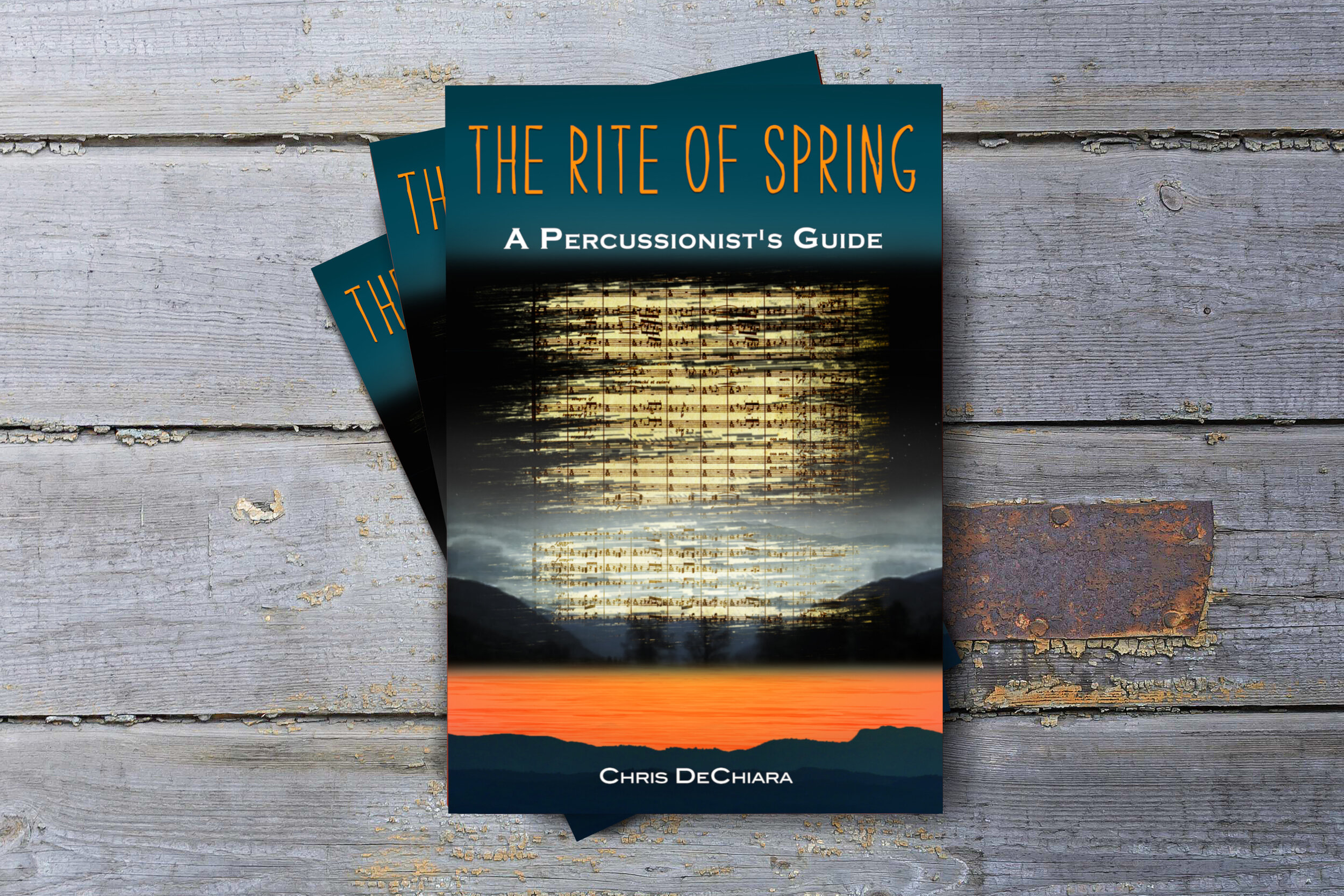Choose print or ebook below!
Click button for paperback version
Click button for ebook version
“Chris delves deep into the inner workings of what is arguably the most iconic piece in the repertoire. With so many editions, changes, and interpretations available, Chris does a fantastic job of offering context and helpful past performance practices, while still leaving room for your own ideas. Furthermore, the historical background and information he provides sheds light into Stravinsky’s compositional process, which is an invaluable tool for anyone who performs this piece. This is a must read for all percussionists. BRAVO, Chris!”
-Jauvon Gilliam
Principal Timpanist, National Symphony Orchestra
From the timpanist’s first triplet to the last sforzando G-sharp, Stravinsky’s The Rite of Spring is a percussionist’s dream. Dueling timpani parts, scraped tam-tam, antique cymbals, and unique bass drum rhythms distinguish the score that changed classical music and percussion writing forever.
In this definitive guide, percussionist/timpanist Christopher J. DeChiara—who has performed the piece numerous times under renowned conductors such as James Conlon and Christoph Eschenbach—explores the history, nuances, and discrepancies in scores and parts of the composition to enrich the perspective of percussionists navigating their own audition or performance.
With a guide to instruments, detailed interpretations of each passage, and visual examples, The Rite of Spring, A Percussionist’s Guide, will educate and inspire percussionists and conductors tackling this thrilling piece.
Covered inside:
Choosing the right instruments
Creating the ideal sound in specific passages
Choosing an ideal set up, especially for the timpanists
Practical performer considerations within the context of real orchestral experience
Historical context that helps all of the above
Thinking about the specific sounds for each instrument’s part
Options for performing certain passages
Musical examples providing harmonic and rhythmic context with other percussion instruments and the rest of the orchestra
Not only will percussionists and timpanists benefit from this, but conductors as well.

